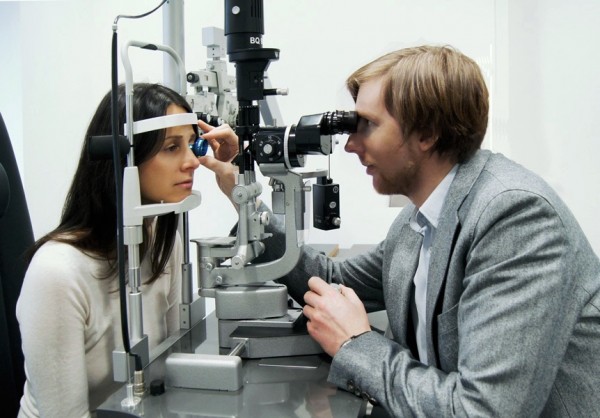Surfer’s Eye: Can This Condition Be Treated Without Doctor’s Help?

The doctor can diagnose the pterygium by examining the front part of the patient’s eye through the use of a special microscope known as ‘slit lamp.’
In the medical field, the surfer's eye is defined as an eye disease in which "fibrous tissue" develops over the exterior of the eye. According to experts, to treat this condition, surgeons usually cut out the tissue using scissors.
However, in Hawaii, based on a 2014 report which the BMJ Case Reports journal published, an adventurous surfer opted to allow the force of water "to take care of his eye" as he dipped his head into the rushing water while he was surfing a 10-meter wave.
Seemingly, according to the doctors, the force of water tore off what they described as "the irritating fibrous tissue", but the said surfer was fortunate that his eyes did not get damaged by the water.
The doctors also said that the said fibrous tissue that developed over the man's eye's outer layers led to eye disease, a condition known as "pterygium." Eye expert says this particular eye condition typically occurs in surfers that it is named, "surfer's eye."
ALSO READ: Is Your Skin Turning Blue? Here's What You Need to Know
Pterygium or Surfer's Eye
This condition may be dubbed for a particular type of athlete, but it can impact any individual spending a lot of time outdoors.
Eye experts say that one of the main symptoms of surfer's eye is the development of "pink, fleshy tissue on the conjunctiva." This part of the eye is the clear tissue, lining the eyelids and covering the eyeball.
Specifically, pterygium is said to form on the side closest to the nose typically and develops toward the pupil area.
One who is not familiar with this condition will find the surfer's eye physically scary, but the good news is that it is not a type of cancer, and it's not deadly.
The growth may slowly spread during a patient's lifetime or stop after a particular time of his life. However, in extreme conditions, it can cover a person's pupil and lead to vision problems later on.
Furthermore, such growth of the pterygium could appear on one or both eyes. When both eyes are affected, the condition is then known as "bilateral pterygium."
And, even though this is not considered a severe condition, it can lead to annoying symptoms. One who experiences this condition may feel like there is something in his eye, or, it may turn red and irritated.
DON'T MISS THIS: Flash Fire Igniting During Surgery: Know How it Happens and How to Prevent It
Symptoms
According to eye doctors, the surfer's eye may not have any symptoms, and it just appears in on the surface of the eye.
In the occurrence of symptoms, one's eye might feel gritty, burn, itch, or provide that feeling of shaving something in it. Another symptom is the eye, looking red.
If there is a growth of pterygium on the eye's pupil area, its shape could change and result in either blurry or double vision.
Before the appearance of the surfer's eye, an individual might notice a related case also known as "pinguecula," a yellowish spot or bump found on the conjunctiva. It could turn red if it irritated.
Causes of Pterygium
One is likely to experience this condition if he is very much exposed to ultraviolet light like one that's coming from the sun.
He is likely to have a surfer's eye too, if he has to try eyes and if irritants like dust and wind enter into his eyes. Eye experts also say that one is most likely to get pterygium if he lives "near the equator and a man whose age is between 20 and 20." However, anyone living in a sunny area can also get the condition regardless of gender and age.
Treatment
The experts' advice is that one should see an eye doctor once he experiences any of the symptoms. The doctor can diagnose the condition by examining the front part of the patient's eye through the use of a special microscope known as a "slit lamp."
An individual does not need any treatment if the symptoms he is experiencing are mild. Suppose the condition leads to temporary irritation or redness. In that case, the eye doctor treats the eye with over-the-counter ointments or drops, eye drops for irritation and redness, or prescription steroid eye drops to alleviate the itchiness, swelling, pain, and redness.
IN CASE YOU MISSED THIS: Staring Into Deep Red Light Can Retain Vision, Study Finds
Aug 13, 2020 07:20 AM EDT





